Insights
The 4 best customer service channels to improve your CX + implementation tips

Insights

If you hadn’t noticed, customer service doesn’t just happen in storefronts and call centers anymore. People choose when, where, how, and even why they want to do business with you. As a business, you’re responsible for meeting us there. That’s why using the right customer service channels is the key to customer satisfaction, loyalty, and service efficiency.
Every customer support channel suits a different need. Some are more immediate, while others are more personal. Some cater to customers who want to text to chat, and others use voice calls to match a customer’s preferences.
Let’s explore some of the most popular customer channel examples, how they can improve your business’s customer experience, and a few tips for implementing them.
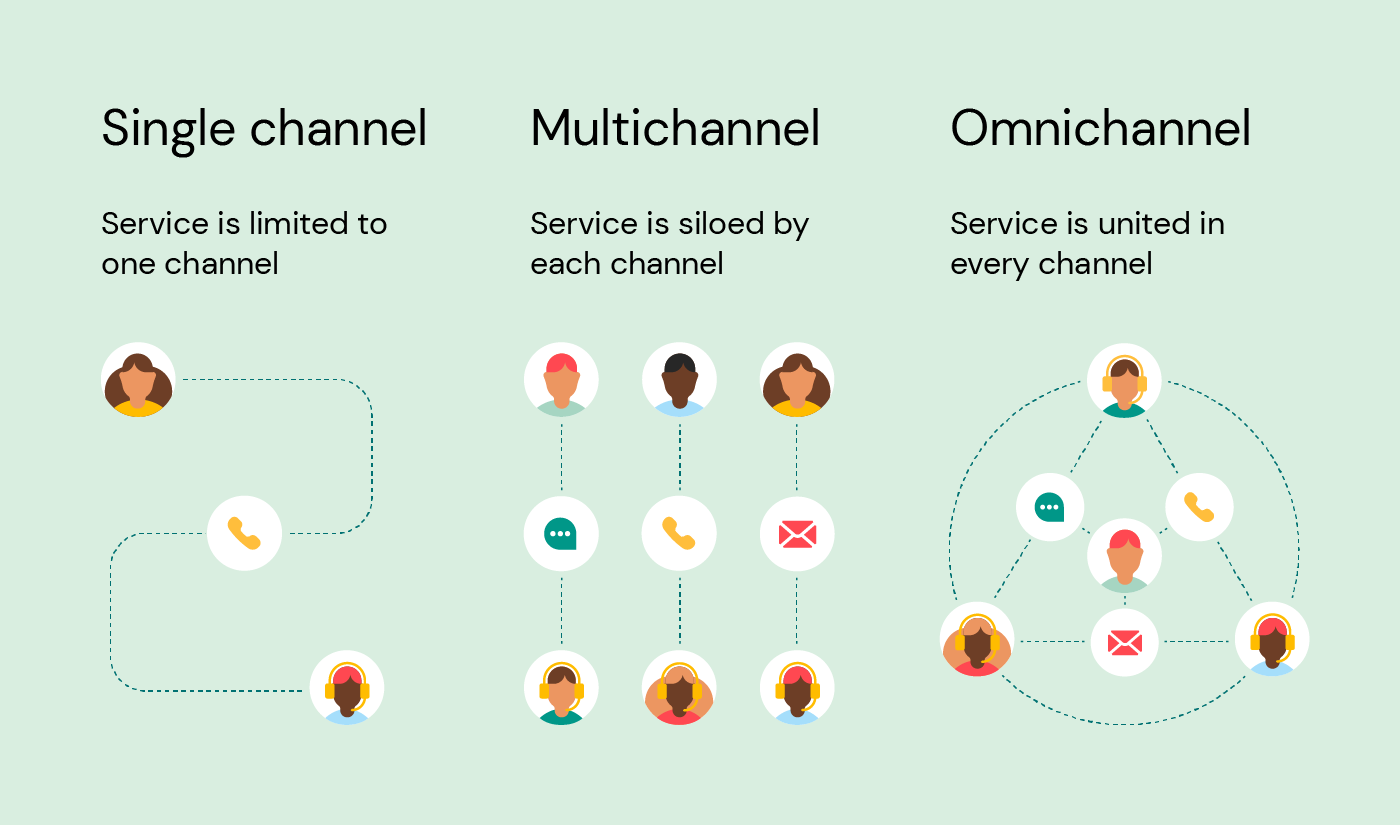
The best way to engage with customers – and engage with the most customers – is by utilizing multiple channels to communicate with them. That doesn’t mean blanketing the internet with your presence, but you need to be smart about where to find your customers.
Two-thirds of global consumers say they use three or more channels. If your customers are using three or more channels, shouldn’t you too?
There are three different types of channel management when it comes to customer service and support:
Omnichannel customer support offers the most complete and frictionless customer experience of these three options. If you can keep your customers satisfied with each interaction, they’re more likely to be loyal. In fact, positive experiences cause customers to spend 140% more and remain customers for 5 years longer versus having a negative experience.
You need to meet your customers where they are to maximize the experience and minimize inconvenience. For example, you might use your phone to flag a bank transaction while you’re on the train, but you might also use a desktop to chat with an agent about opening a new account.
These channels are the most important for businesses because they’re the most popular among consumers.
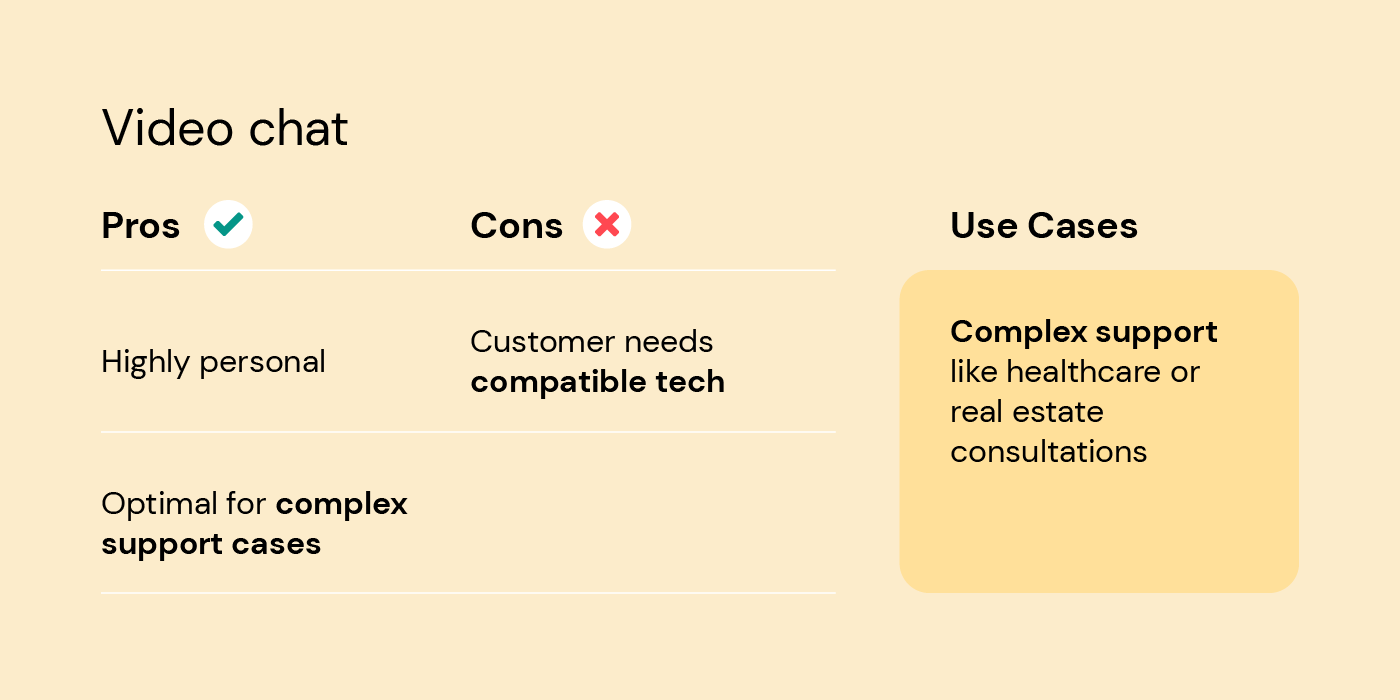
Not every industry has the same demands for channel optimization. Businesses that rely primarily on quick answers to simple questions might not need to invest in more personal digital customer support channels. However, in-app video calling is a very effective and popular channel choice for those that do.
Video allows hyper-personalization and CX to boost engagement because of its face-to-face interactions. Video chat is great for troubleshooting technical issues on hardware or physical products. Face-to-face communication is valuable in highly personal industries like healthcare or real estate – where a recent study recorded customer satisfaction at nearly 99% for the use of the technology.
When it comes to omnichannel compatibility, video chat is a star. Video is compatible with both voice calls and chat. A customer service agent can choose to switch to video when necessary, giving the customer the satisfaction that the agent knows what’s best for their individual problem.

Phone and voice calling support are common – and expected – but there’s a right way and a wrong way to implement this type of customer service channel. Consumers are weary of long wait times, robotic menu options offered by interactive voice response (IVR) that might not fit their problems, and hold music that drives them up the wall.
With the right automation and routing capabilities, you can quell those customer fears by optimizing voice conversations chat to improve efficiency and customer experience. If there are no available agents to speak with, for example, the caller can then switch to WhatsApp or receive a follow-up call when an agent is free. This makes the customer happier by ditching the long wait – and the Muzak.
Voice calling is still the preferred channel for many customer support cases. Some markets, like the U.S., favor this channel for its wide availability, while in other markets, certain types of customers prefer phone support over another option. Similarly, this might be the best option if your business requires immediacy, like a bank or financial institution.
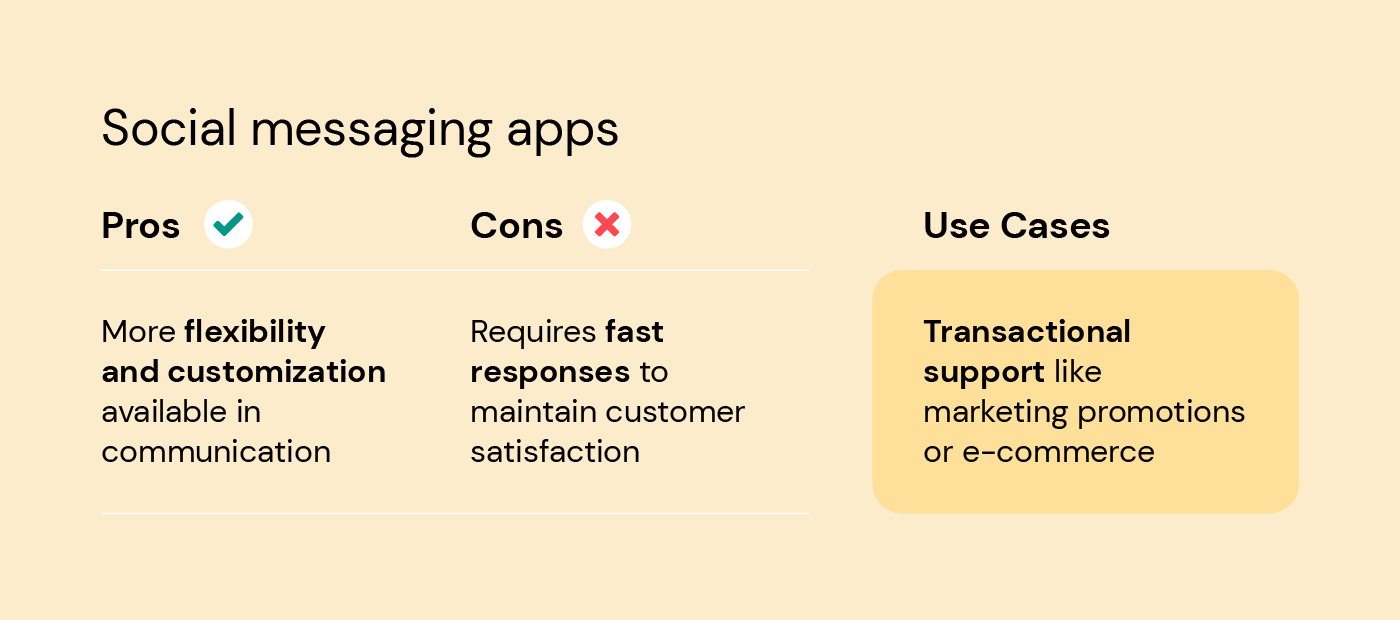
There’s no denying that social messaging is a hugely popular method of reaching customers across continents. Social messaging apps can deliver rich messages to customers, handle chats, host video calls, and conduct transactions natively.
There are several social messaging channels that businesses can choose from. Depending on the markets you operate in and the demographics of your target customers, some apps may make more sense than others:
Some social channels are popular in specific markets, so you can easily target your users accordingly. This isn’t merely a suggestion but a must in today’s interconnected world. You might lose valuable traffic and business from customers in Asian markets if you don’t maintain a support presence on KakaoTalk or LINE, for example.
Many apps offer “delivered” and “read” insights for messages. They’re also great for discussing promotions with customers because of in-app shopping compatibility that ups the convenience factor.
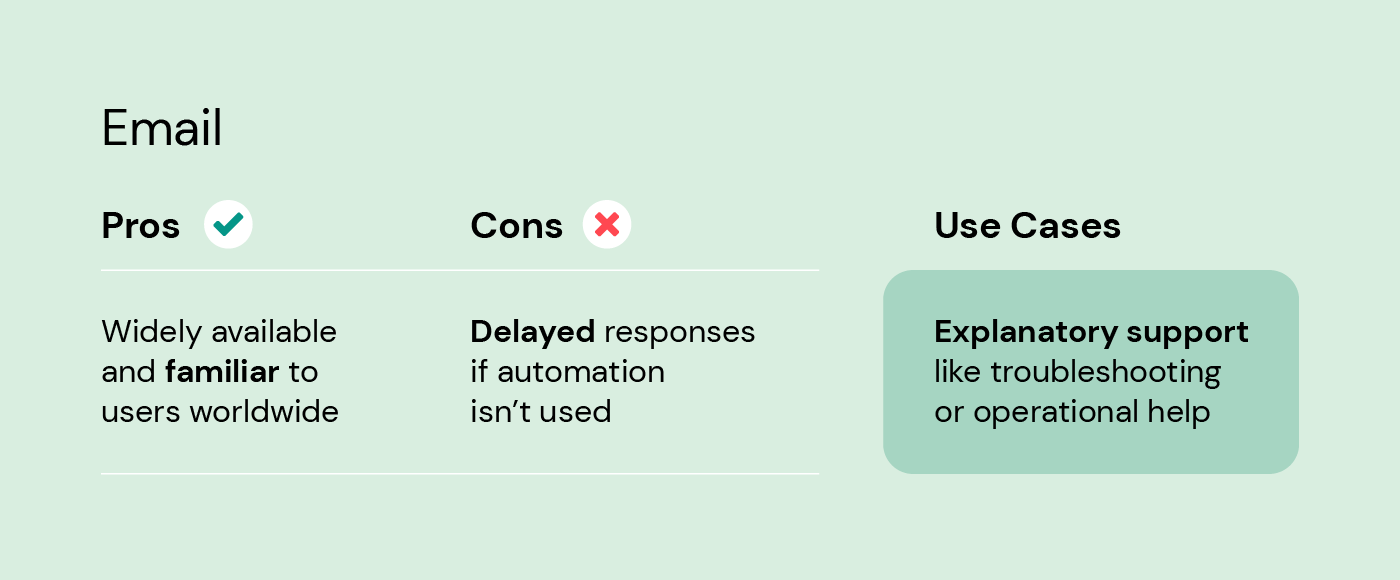
Email is one of the most widely available support channels due to its simplicity. Customers can either send an email to contact you or input their information in a contact form to capture and send a follow-up email to them.
This channel is most helpful to customers who need instructions for a long or technically complicated process but not as beneficial for those who need hand-holding or lightning-fast assistance.
Luckily, with a dedicated partner like Sinch, you can optimize email responses with automated answers and AI to erase any fears of long response times. And Sinch’s email support team has a 95% customer satisfaction score to ensure none of your valuable emails slip through the cracks.
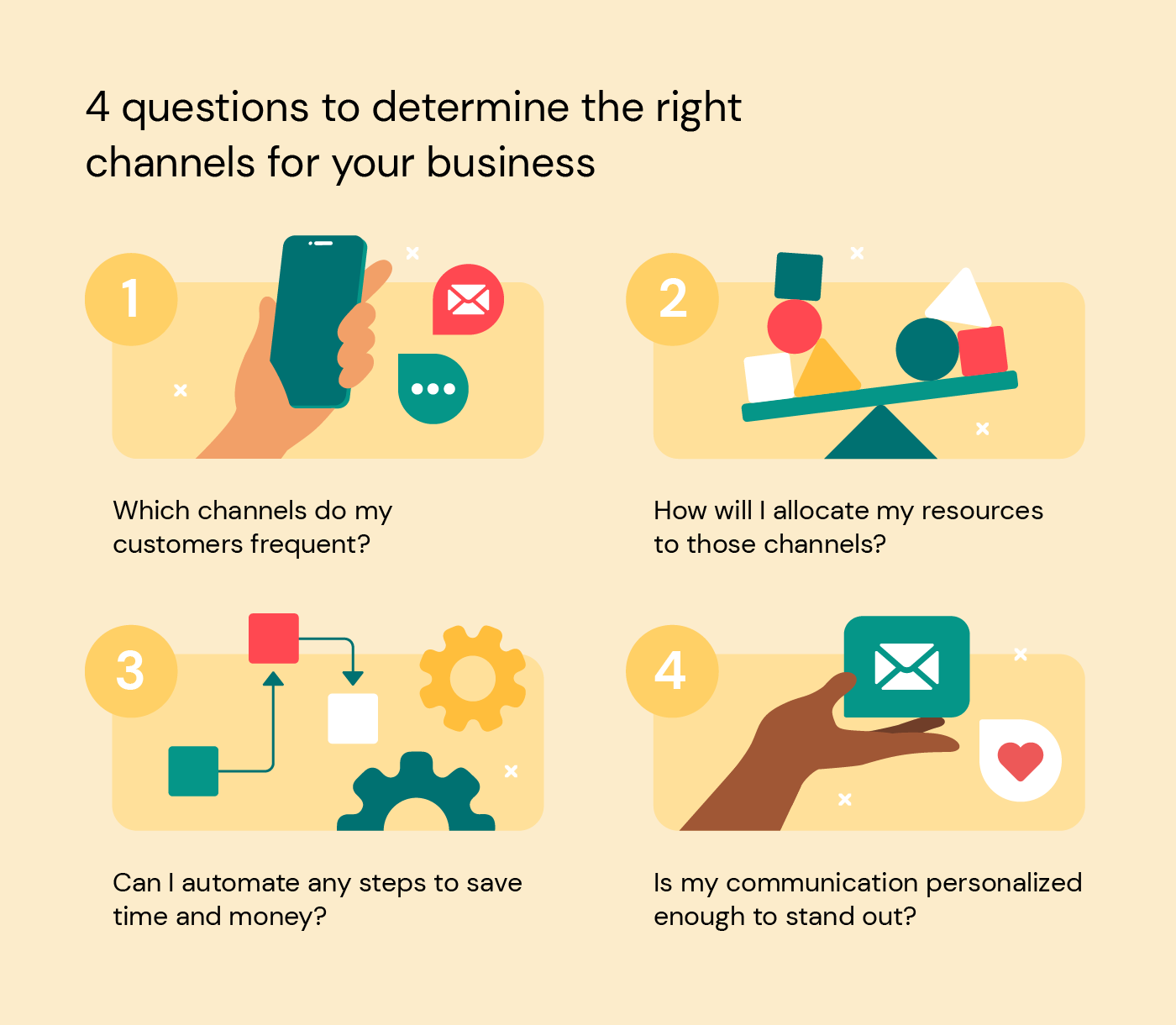
These tips can help you boost engagement by improving CX. They can also help you think big about your customer base and your role in their lives.
To succeed in a competitive world, convenience triumphs over almost everything else. You need to analyze your customers’ behaviors, needs, wants, and expectations. What can you offer them that supports that?
For example, don’t dismiss chatbots just because you heard an old trope about customers not wanting to speak to bots. Many prefer chatbots because they offer faster customer engagement that’s available 24/7. If round-the-clock support is something your target customers need, it should be a priority for implementation.
You don’t need to be omnipresent, but you do need to be exactly where your customer base is frequenting.
Whichever channels are most important to your customers are the channels your business should target first. Your support team is a resource, and resources are finite, so maximize their capabilities by harnessing the most valuable targets. Where do your customers spend most of their time online?
Once you determine the channels where you’ll have a presence, you need to bring in analytics to validate your decision. Are you tracking conversions across channels? If not, you’re missing valuable insights that can shape your omnichannel marketing strategy.
Simple, common, and repeatable tasks usually don’t require personal interactions. Use chatbots or self-service knowledge centers to provide opportunities for customers to answer questions quickly and without having to talk directly to an agent.
Chatbots appeal to businesses because of their efficiency and how they complement a human support team. Bots can take over simple tasks or identify needs and are available 24/7 – that way, agents can spend their time providing added value to the customer and addressing those needs.
With knowledge centers, customers can find answers themselves. However, they might still need a little help occasionally. AI solutions like AskFrank can integrate with a business’s chatbot, contact center, website, or knowledge base to offer information 24/7 and quasi-support if you can’t be available around the clock with a support team or chatbot.
With an omnichannel strategy, every channel should be somewhat connected to others. The more connected the better, from a CX standpoint.
As we covered above, customers are more likely to convert when communication is personalized and unique rather than impersonal and bland. This makes CRM integrations helpful for consistency by delivering all relevant customer information to agents and bots during the customer service process.
Language models can scour and source customer information to recognize who they’re talking to and what the problem might be. And where automation stops, your brand voice should take over to lend authenticity to every communication your brand puts out, whether that’s an email marketing campaign or an FAQ section on your website.
Don’t shut the door on an opportunity to draw more customers into the fold. A partner like Sinch can help you amplify your customer experience and fulfill your communication support needs, including voice calls, messaging, and even emergency services.
With the knowledge that customer service channels require a diverse, targeted approach, you can implement a solution that works for your business. With Sinch’s Conversation API, you can support messaging across 13 different channels, so you never miss out on an opportunity to connect and convert.